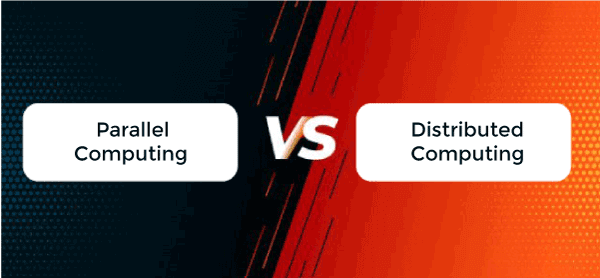Difference between Parallel Computing and Distributed ComputingThere are mainly two computation types, including parallel computing and distributed computing. A computer system may perform tasks according to human instructions. A single processor executes only one task in the computer system, which is not an effective way. Parallel computing solves this problem by allowing numerous processors to accomplish tasks simultaneously. Modern computers support parallel processing to improve system performance. In contrast, distributed computing enables several computers to communicate with one another and achieve a goal. All of these computers communicate and collaborate over the network. Distributed computing is commonly used by organizations such as Facebook and Google that allow people to share resources. In this article, you will learn about the difference between Parallel Computing and Distributed Computing. But before discussing the differences, you must know about parallel computing and distributed computing. What is Parallel Computing?It is also known as parallel processing. It utilizes several processors. Each of the processors completes the tasks that have been allocated to them. In other words, parallel computing involves performing numerous tasks simultaneously. A shared memory or distributed memory system can be used to assist in parallel computing. All CPUs in shared memory systems share the memory. Memory is shared between the processors in distributed memory systems. Parallel computing provides numerous advantages. Parallel computing helps to increase the CPU utilization and improve the performance because several processors work simultaneously. Moreover, the failure of one CPU has no impact on the other CPUs' functionality. Furthermore, if one processor needs instructions from another, the CPU might cause latency. Advantages and Disadvantages of Parallel ComputingThere are various advantages and disadvantages of parallel computing. Some of the advantages and disadvantages are as follows: Advantages
Disadvantages
What is Distributing Computing?It comprises several software components that reside on different systems but operate as a single system. A distributed system's computers can be physically close together and linked by a local network or geographically distant and linked by a wide area network (WAN). A distributed system can be made up of any number of different configurations, such as mainframes, PCs, workstations, and minicomputers. The main aim of distributed computing is to make a network work as a single computer. There are various benefits of using distributed computing. It enables scalability and makes it simpler to share resources. It also aids in the efficiency of computation processes. Advantages and Disadvantages of Distributed ComputingThere are various advantages and disadvantages of distributed computing. Some of the advantages and disadvantages are as follows: Advantages
Disadvantages
Key differences between the Parallel Computing and Distributed Computing
Here, you will learn the various key differences between parallel computing and distributed computation. Some of the key differences between parallel computing and distributed computing are as follows:
Head-to-head Comparison between the Parallel Computing and Distributed Computing
ConclusionThere are two types of computations: parallel computing and distributed computing. Parallel computing allows several processors to accomplish their tasks at the same time. In contrast, distributed computing splits a single task among numerous systems to achieve a common goal. |
 For Videos Join Our Youtube Channel: Join Now
For Videos Join Our Youtube Channel: Join Now
Feedback
- Send your Feedback to [email protected]
Help Others, Please Share










